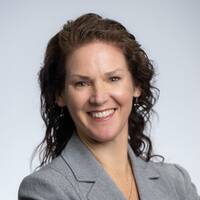
09 Jan NYU Study Finds Sudden Unexplained Death in Childhood May Be Seizure Related
MedicalResearch.com Interview with:

Laura Gould
Laura Gould, MSc, MA, PT
Research Scientist
SUDC Registry and Research Collaborative
Comprehensive Epilepsy Center
Department of Neurology
NYU Langone Grossman School of Medicine
MedicalResearch.com: What is the background for this study?
Response: Sudden Unexplained death in childhood (SUDC) is the unexplained death of a child on or after their 1st birthday that remains unexplained after a comprehensive death investigation. About 400 SUDC occur annually between the ages of 1-18, but more than half occur in toddlers, aged 1-4 years. Since most deaths are sleep related and unwitnessed with unremarkable autopsies, mechanisms of deaths have eluded our understanding.
Febrile seizures are common in young children; ~ 3% of US children 6 months to 5 years will experience one. SUDC however has been associated with a 10-fold increase in febrile seizures; our study is the first to implicate them at time of death. The SUDC Registry and Research Collaborative (www.sudcrrc.org) at NYU Langone Health has enrolled over 300 cases of unexplained child death; seven with audiovisual recordings from the child’s bedroom during their last sleep period. More than 80% of the cases enrolled in the registry were children 1-4 years at the time of death. The seven cases with videos were aged 13-27 months with normal development and no pathogenic disease-causing variants by whole exome sequencing.
MedicalResearch.com: What are the main findings?
Response: The seven recordings we analyzed revealed a high rate of terminal convulsions. Two were difficult to interpret as their devices only recorded for short periods when triggered by sound or motion; one was suggested of a convulsive event. The five with continuous recordings, however, all revealed terminal convulsions. Only one case had a known history of febrile seizures.
This work suggests that many unexplained sudden toddler deaths may be seizure-related, with possible implications to unwitnessed sleep-related deaths in infancy and older individuals.
MedicalResearch.com: Was there any explanation for the seizures?
Response: We do not know the cause of the convulsions identified, but consider that mild infections may have played a role in decreasing their seizure threshold.
MedicalResearch.com: What should readers take away from your report?
Response: We need to understand SUDC. While less common than sudden unexplained infant deaths (~2600 cases /year in U.S.), unexplained deaths of children aged 1-4 years is the 5th leading category of death of this age group, yet most of the medical community is unaware it exists. Research funding is warranted and desperately needed to take the findings from our study to explain why the seizures occurred, understand why they were lethal and why certain children are vulnerable.
We also need to reopen conversations about post-infancy sleep guidelines. They are currently vague and do not consider seizure risk, even though children aged 1-4 years are at the highest risk for the most common childhood convulsive event: febrile seizures. We need to have open and honest dialogue with parents about febrile seizures and balance public health needs; while the vast majority of children with febrile seizures will have positive outcomes, some will not.
MedicalResearch.com: What recommendations do you have for future research as a results of this study?
Response: It is likely that other such videos exist from other cases of sudden deaths in infancy and childhood. If readers know of such cases, we would appreciate their contact. Please contact Laura Gould at NYU Langone Health at [email protected]
No discloures
doi:10.1212/WNL.0000000000208038,
Laura Gould and Codi-Ann Reid and Alcibiades J. Rodriguez and Orrin Devinsky and for SUDC Video Working Group
Neurology,volume = 102,number = ,pages = e208038, year = {2024},
URL = https://www.neurology.org/doi/abs/10.1212/WNL.0000000000208038
The information on MedicalResearch.com is provided for educational purposes only, and is in no way intended to diagnose, cure, or treat any medical or other condition.
Some links may be sponsored. Products are not endorsed.
Always seek the advice of your physician or other qualified health and ask your doctor any questions you may have regarding a medical condition. In addition to all other limitations and disclaimers in this agreement, service provider and its third party providers disclaim any liability or loss in connection with the content provided on this website.
Last Updated on January 9, 2024 by Marie Benz MD FAAD
